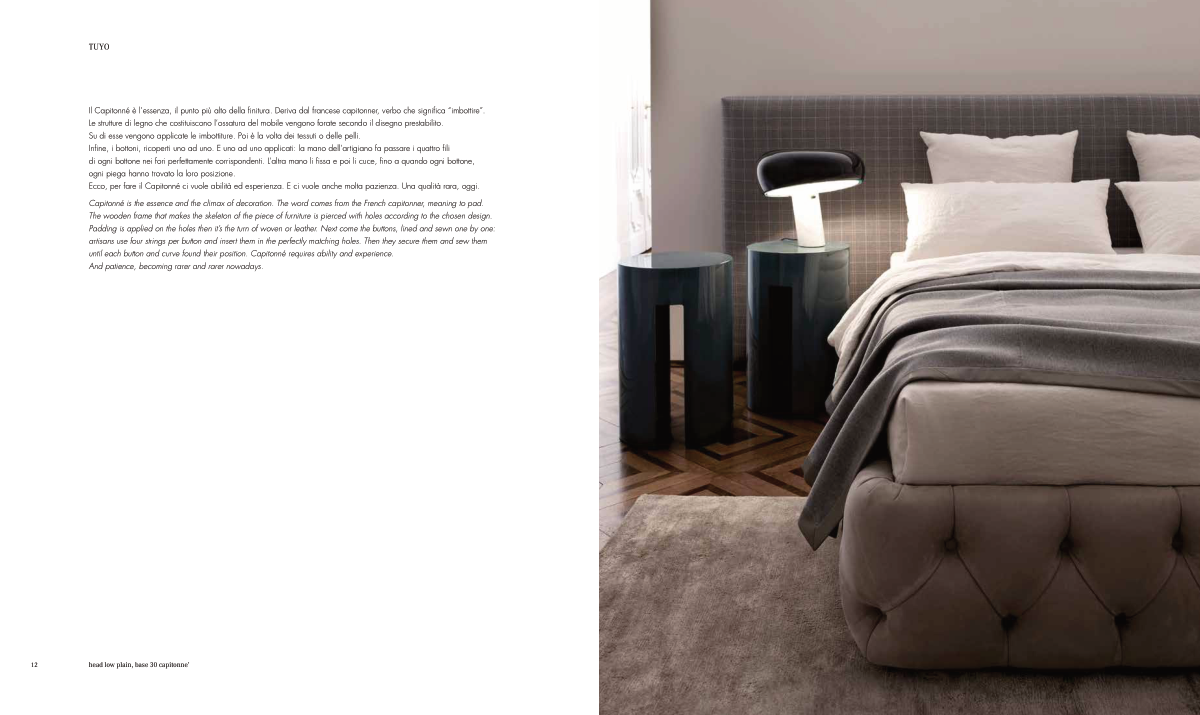TUYO
12
Il Capitonné è l’essenza, il punto più alto della finitura. Deriva dal francese capitonner, verbo che significa “imbottire”.
Le strutture di legno che costituiscono l’ossatura del mobile vengono forate secondo il disegno prestabilito.
Su di esse vengono applicate le imbottiture. Poi è la volta dei tessuti o delle pelli.
Infine, i bottoni, ricoperti uno ad uno. E uno ad uno applicati: la mano dell’artigiano fa passare i quattro fili
di ogni bottone nei fori perfettamente corrispondenti. L’altra mano li fissa e poi li cuce, fino a quando ogni bottone,
ogni piega hanno trovato la loro posizione.
Ecco, per fare il Capitonné ci vuole abilità ed esperienza. E ci vuole anche molta pazienza. Una qualità rara, oggi.
Capitonné is the essence and the climax of decoration. The word comes from the French capitonner, meaning to pad.
The wooden frame that makes the skeleton of the piece of furniture is pierced with holes according to the chosen design.
Padding is applied on the holes then it’s the turn of woven or leather. Next come the buttons, lined and sewn one by one:
artisans use four strings per button and insert them in the perfectly matching holes. Then they secure them and sew them
until each button and curve found their position. Capitonné requires ability and experience.
And patience, becoming rarer and rarer nowadays.
head low plain, base 30 capitonne’
MERIDIANI_catalogoTUYO_09.indd 12
21/01/14 14.12
MERIDIANI_catalogoTUYO_09.indd 13
21/01/14 14.13


